
The North American AJ Savage was a carrier-based medium bomber built for the United States Navy by North American Aviation. The aircraft was designed shortly after World War II to carry atomic bombs and this meant that the bomber was the heaviest aircraft thus far designed to operate from an aircraft carrier. It was powered by two piston engines and a turbojet buried in the rear fuselage. The AJ-1 first became operational in 1950 and several were based in South Korea during 1953 as a deterrent against the Communists. Of the 140 built, plus three prototypes, 30 were reconnaissance aircraft. Inflight-refueling equipment was deployed on the Savage in the mid-1950s. The bomber was replaced by the Douglas A3D Skywarrior beginning in 1957.

Electronic Attack Squadron 129 (VAQ-129) is the United States Navy's only EA-18G Growler training squadron. Known as the "Vikings", they are a Fleet Replacement Squadron, or FRS, and are charged with training all EA-18G aviators and developing standard operating procedures for the maintenance and operation of the aircraft. The squadron is permanently stationed at Naval Air Station Whidbey Island, in Puget Sound, Washington.
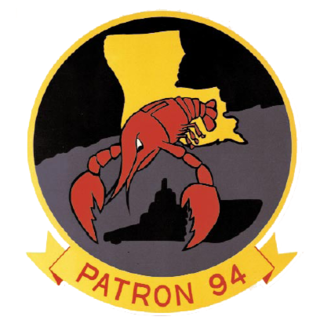
VP-94Crawfishers was a Patrol Squadron of the U.S. Navy Reserve. Originally established on 1 November 1970 at NAS Belle Chase, Louisiana, it was disestablished in September 2006. It was the second squadron to be designated VP-94, the first VP-94 was redesignated VPB-94 on 1 October 1944.

VAH-15 was a short-lived Heavy Attack Squadron of the U.S. Navy, based at NAS Norfolk, Virginia. The squadron flew the North American AJ Savage and Lockheed TV-2 Seastar aircraft.

VAH-16, nicknamed the White Blades, was a short-lived Heavy Attack Squadron of the U.S. Navy, based at NAS North Island, California. The squadron flew the North American AJ Savage aircraft.

VAH-123, nicknamed the Professionals from 1961 onward, was a Heavy Attack Squadron of the U.S. Navy, based at NAS Whidbey Island, Washington. It was established on 15 June 1957 as Heavy Attack Training Unit, Pacific (HATUPAC). On 29 June 1959 it was redesignated as VAH-123. The squadron was disestablished on 1 February 1971, after eleven years of service.
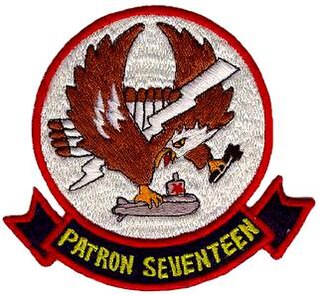
VP-17, nicknamed the White Lightnings, was a Patrol Squadron of the U.S. Navy.
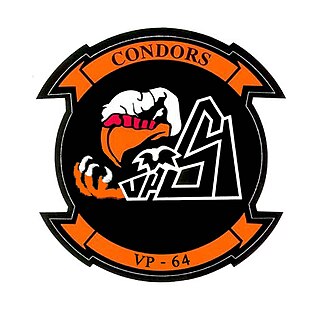
VP-64, nicknamed the Condors, was a Patrol Squadron of the U.S. Navy Reserve. The squadron was established on 1 November 1970 and redesignated Fleet Logistics Support Squadron VR-64 on 18 September 2004, after 34 years of service. It was based at NAS Willow Grove, Pennsylvania during its entire life. Units of the squadron made 26 major overseas deployments.
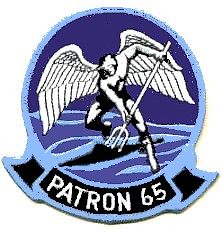
VP-65, nicknamed the Tridents, was a Patrol Squadron of the U.S. Navy Reserve. The squadron was established on 16 November 1970 at NAS Los Alamitos, California, and moved on 6 January 1971 to NAS Point Mugu. It was disestablished on 4 March 2006, after 35 years of service. Elements of the squadron made 22 major overseas deployments.
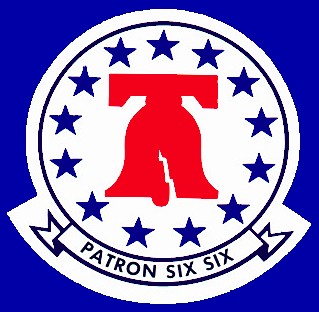
VP-66 was a Patrol Squadron of the U.S. Navy Reserve. The squadron was established on 1 November 1970 at NAS Willow Grove, Pennsylvania, where it was based for the rest of its life. It was disestablished on 31 March 2006, after 25 years of service. The squadron's nicknames were the Flying Sixes from 1971 to 1974, the Dicemen from 1975 to 1980, and the Liberty Bells from 1981 onward. Elements of the squadron made 19 major overseas deployments.
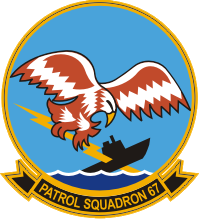
VP-67 was a Patrol Squadron of the U.S. Navy Reserve. The squadron was established on 1 November 1970 at NAS Memphis, Tennessee, where it was based for its entire life. It was disestablished on 30 September 1994, after 24 years of service. The squadron's nickname was the Golden Hawks, also unofficially called the Thunder Chickens. Elements of the squadron made 23 major overseas deployments.

VP-68 was a Patrol Squadron of the U.S. Navy Reserve. The squadron was established on 1 November 1970 at NAS Patuxent River, Maryland. Its home port moved to Naval Air Facility Washington in 1985. The squadron was disestablished on 16 January 1997, after 26 years of service. Its nickname was the Blackhawks from 1972 onward. Elements of the squadron made 28 major overseas deployments.
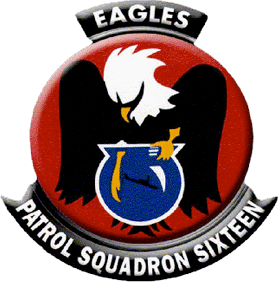
VP-16, nicknamed the War Eagles, is an active Patrol Squadron of the U.S. Navy. It has been based at NAS Jacksonville, Florida since its founding in 1946. The squadron's mission is to operate Maritime patrol aircraft to the fleet in support of national interests. Originally established as Reserve Patrol Squadron 906 (VP-906) in May 1946, it was redesignated Medium Seaplane Squadron 56 (VP-ML-56) on 15 November 1946, redesignated Patrol Squadron 741 (VP-741) in February 1950 and redesignated Patrol Squadron 16 (VP-16) on 4 February 1953. It is the third squadron to be designated VP-16; the first VP-16 was redesignated VP-41 on 1 July 1939 and the second VP-16 was redesignated VPB-16 on 1 October 1944.
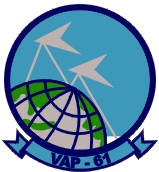
VAP-61 was a Heavy Photographic Squadron of the U.S. Navy. Originally established as VP-61 on 20 January 1951, it was redesignated VJ-61 on 5 March 1952. It was redesignated as VAP-61 in April 1956, redesignated as VCP-61 on 1 July 1959 and redesignated as VAP-61 on 1 July 1961. The squadron was disestablished on 1 July 1971.

VAP-62 was a Heavy Photographic Squadron of the U.S. Navy. Originally established as Photographic Squadron Sixty-Two (VJ-62) on 10 April 1952, it was redesignated as Heavy Photographic Squadron (VAP-62) on 2 July 1956. The squadron was disestablished on 15 October 1969.

Patrol Squadron One (VP-1), established 15 February 1943, is an active aviation squadron of the United States Navy operating the Boeing P-8A Poseidon aircraft from its home port at Naval Air Station Whidbey Island, Washington, United States. The squadron is known by its nickname "Screaming Eagles", adopted in 1985 replacing its previous nickname "Fleet's Finest". The squadron went by the call sign "BACKDOOR" during the 1960s and 1970s.
VAL-4 was a Light Attack Squadron of the U.S. Navy. Established on January 3, 1969, it was disestablished on April 10, 1972.

Unmanned Patrol Squadron 19 (VUP-19) is an unmanned patrol squadron of the United States Navy, nicknamed the "Big Red" and established on 1 October 2013.




















